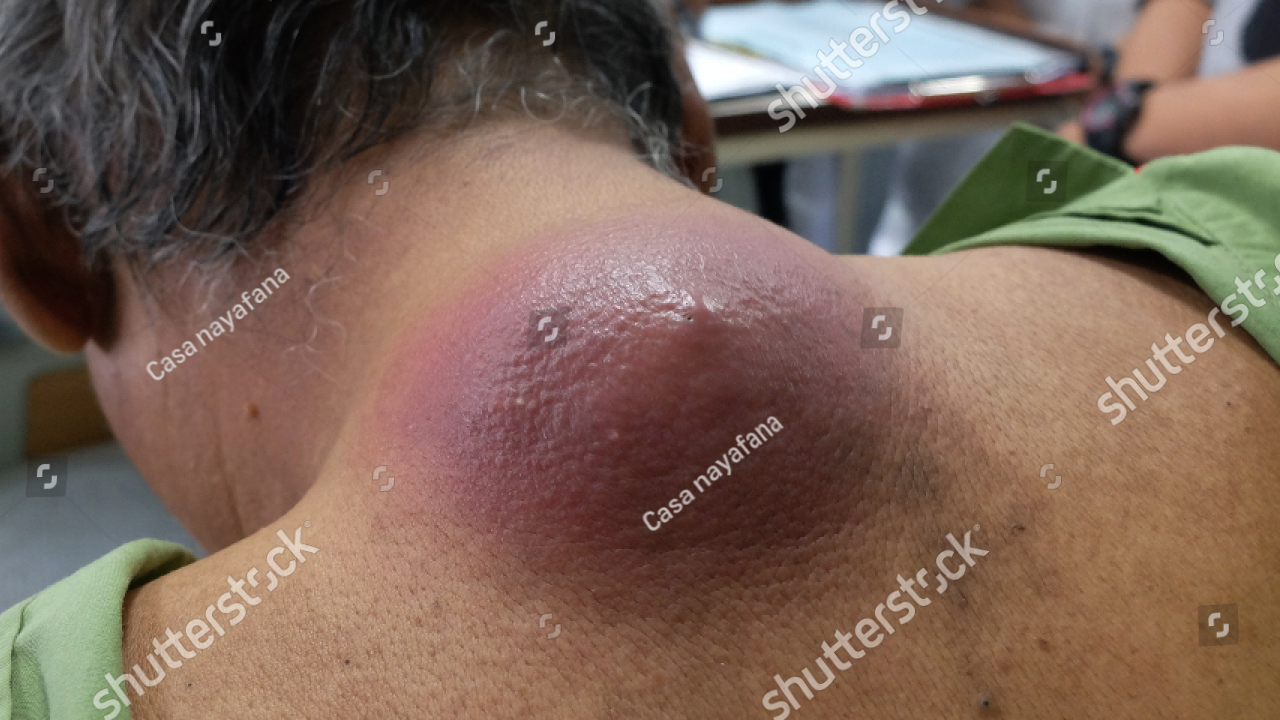❌ Why You Should NOT Pop a Giant Cyst Yourself:
-
Infection Risk: Cysts can be filled with bacteria. Popping one without sterile tools can cause a serious infection or even lead to cellulitis or an abscess.
-
Scarring: Improper draining often leads to permanent scarring or discoloration.
-
Incomplete Removal: If the cyst sac isn’t fully removed (which you likely can’t do at home), it will grow back.
-
Pain & Trauma: Giant cysts can be deep — squeezing them can cause more tissue damage and pain than relief.
✅ What You Should Do Instead:
-
See a Dermatologist or Medical Professional
-
They can:
-
Safely drain the cyst
-
Use a local anesthetic
-
Prescribe antibiotics if needed
-
Fully remove the cyst sac to prevent recurrence
-
-
-
Until You Can Get Medical Help:
-
Keep it clean: Wash gently with soap and water.
-
Do not squeeze it.
-
Apply a warm compress: 10–15 minutes a few times a day. This can help reduce inflammation and sometimes bring it to a head if it’s ready.
-
Watch for signs of infection: Redness, warmth, pus, swelling, or fever = time to see a doctor immediately.
-
TL;DR:
Don’t pop a giant cyst. It’s not a pimple. Go to a healthcare provider. It’s safer, less painful, and far more effective long term.
🚫 Risks of Popping a Giant Cyst Yourself
-
Infection: Using non-sterile tools or unclean hands can introduce bacteria into the cyst, leading to infection. Infections can cause pain, swelling, redness, and may require antibiotic treatment to resolve
-
Incomplete Drainage: Without proper knowledge and technique, self-lancing may fail to completely drain the cyst. Partial drainage can lead to recurrence or persistence of the cyst, necessitating further medical intervention .
-
Scarring: Improper lancing techniques can result in tissue damage and scarring. Visible scarring may be permanent and cosmetically undesirable, particularly if the cyst is located on a visible area of the body .
-
Damage to Surrounding Tissues: Attempting to pop a cyst without proper technique can cause damage to surrounding tissues, leading to complications and prolonged healing times .
✅ Recommended Actions
-
Consult a Healthcare Professional: A dermatologist or healthcare provider can assess the cyst and recommend appropriate treatment options, which may include drainage or surgical removal under sterile conditions.
-
Avoid Self-Treatment: Refrain from attempting to pop, squeeze, or lance the cyst yourself.
-
Monitor for Changes: Keep an eye on the cyst for any signs of infection or rapid growth, and seek medical attention if these occur.
🏥 Where to Seek Help in Phnom Penh
If you’re in Phnom Penh, Cambodia, and need assistance with a sebaceous cyst, consider visiting the following medical facilities:
-
Royal Phnom Penh Hospital: A reputable hospital offering a range of medical services, including dermatology.
-
Calmette Hospital: A government hospital with various departments, including dermatology.
-
International SOS Phnom Penh Clinic: Provides medical services with international standards, including dermatological care.
Attempting to pop a giant cyst yourself can lead to serious complications. It’s essential to seek professional medical advice and treatment to ensure safe and effective management of the cyst.
🩺 Who Can Actually Treat a Giant Cyst?
Only licensed healthcare professionals can safely treat a giant cyst. This usually includes:
-
Dermatologists (skin specialists)
-
General surgeons (if the cyst is deep or infected)
-
Primary care doctors (for evaluation and basic drainage)
✅ Common Medical Treatments for a Giant Cyst
1. Evaluation & Imaging (if needed)
-
The doctor will assess whether the cyst is infected or just inflamed.
-
Sometimes they may use ultrasound if it’s very deep.
2. Incision and Drainage (I&D)
-
For inflamed or infected cysts.
-
Procedure:
-
Local anesthetic (numbs the area)
-
Small cut is made
-
Pus or keratin is drained
-
Antibiotics might be prescribed if infected
-
-
Does not remove the cyst wall, so it may return.
3. Excision (Surgical Removal)
-
Best for non-inflamed or recurring cysts.
-
Procedure:
-
Local anesthetic
-
Entire cyst sac is surgically removed
-
Stitches usually required
-
Minimal recurrence if fully excised
-
4. Steroid Injections (rare cases)
-
For reducing inflammation in a cyst that’s painful but not infected.
🕐 Aftercare Instructions (Post-Treatment)
-
Keep the area clean and dry.
-
Change dressings as instructed.
-
Watch for signs of infection: redness, warmth, pus, fever.
-
Return for suture removal if needed (usually in 7–14 days).
🧼 Until You See a Doctor
Here’s what you can do now:
-
Warm compresses: 10–15 minutes, 2–3 times daily. This can help reduce swelling or bring the cyst to a head.
-
Do not squeeze or cut: This increases the risk of infection.
-
Keep it clean: Use mild soap and water.
-
Pain relief: Over-the-counter medications like ibuprofen or acetaminophen.
🔎 Need Help Finding a Doctor?
If you tell me your location, I can help you find a local clinic or dermatologist near you.
